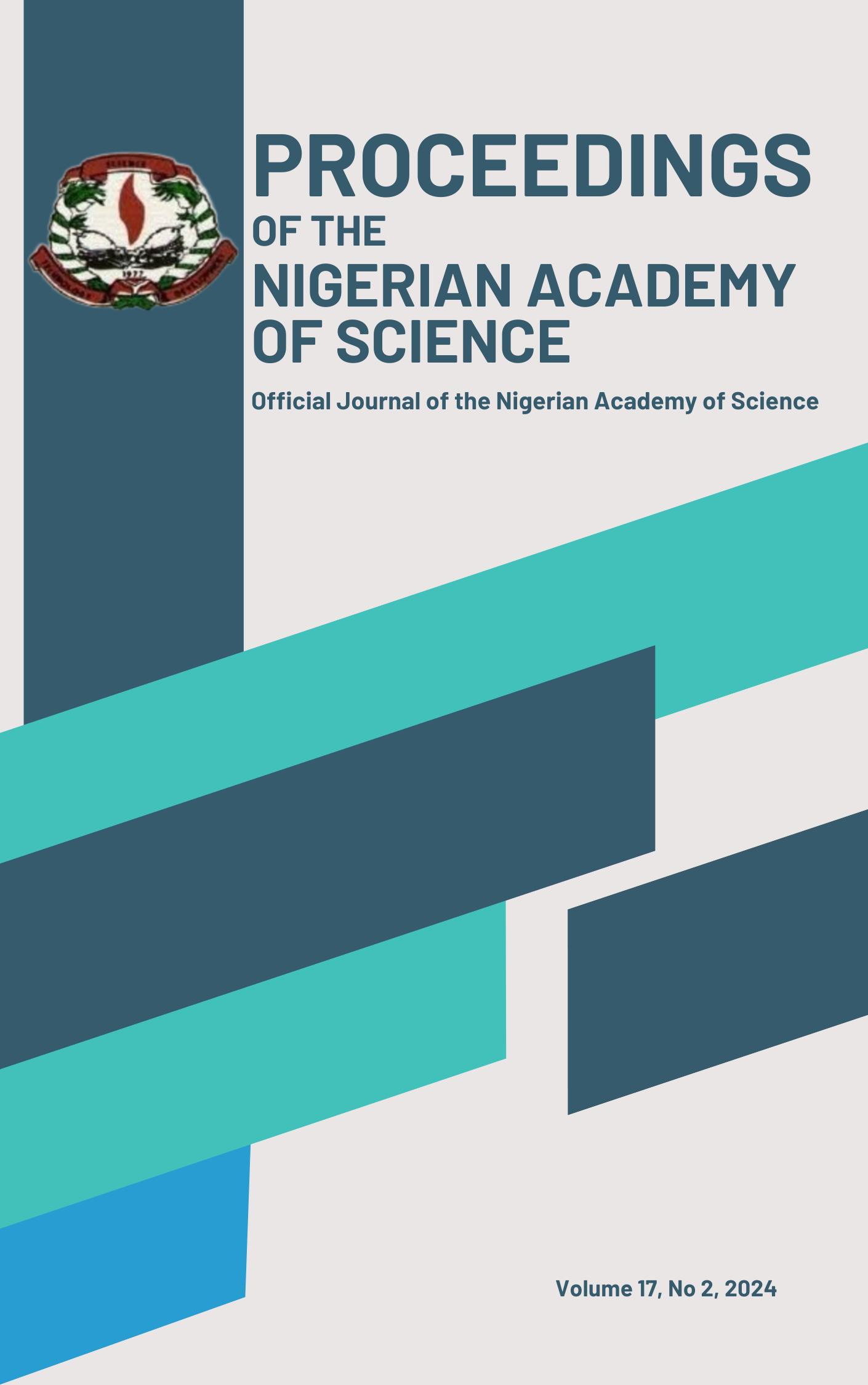Main Article Content
Bio-active composition, antibacterial activity and molecular docking studies of Salicia nitida (Benth.) root extracts
Abstract
This study identifies the bioactive compounds of know pharmacological importance present in the root extracts of Salicia nitida. A computational analysis was conducted to analyze the potential antibacterial bioactive component, Butylated hydroxytolene (Compound Identification number CID: 31404) and 5-Eicosene (Compound Identification number (CID): 5364600), identified from Gas Chromatography-Mass Spectrophotometry (GC-MS) analysis, against class A beta-lactamase enzyme (Protein Data Bank (PDB): 3BLM) to identify its inhibition potentials. Finally, we also investigated the antibacterial potentials of S. nitida. Standard qualitative screening methods were employed to access phytochemical constituents present in the root extracts of S. nitida. Gas Chromatography-Mass Spectrophotometry analysis was used to identify the bioactive components present in root extracts of S. nitida. The disc diffusion method with slight modifications was adopted to test for the susceptibility of the selected test bacteria to the root extracts of S. nitida. Molecular docking was utilized to predict the binding affinity and energy of the bioactive components, butylated hydroxytolene and 5-eicosene, as ligand compound with class A beta-lactamase enzyme as protein receptor. The phytochemical analysis showed that saponins, tannins, alkaloids, flavonoids and phenols are present while glycosides are absent in root extracts of S. nitida. Gas Chromatography-Mass Spectrophotometry analysis of root extracts of S. nitida revealed the presence of ten chemical compounds. The highest retention time (RT) recorded for S. nitida was in 9-Octadecenoic acid (36.804) and the least in Butylated Hydroxytoluene (10.13). The peak area and the eluted chemical compounds found in the GCMS analysis are shown in the chromatogram. Molecular docking simulations revealed valuable insights into the potential interactions between Class A beta-lactamase enzyme (PDB: 3BLM) with Butylated hydroxytoluene (CID: 31404) and 5-Eicosene (CID: 5364600). The binding energies reported provide a quantitative measure of the interaction strength at various positions. The results from the anti-bacterial assay showed that Salicia nitida root extract inhibited the growth of Staphylococcus aureus and Escherichia coliwith inhibitory zone diameters range of 17.00 - 19.50 mm and 20.50 - 28.50 mm for the standard antibiotic agents. The phytochemical and GC-MS findings suggest that Salicia nitida root extracts contain bioactive constituents which are known to exhibit physiological activities. More so, stable complexes were formed between Class A beta-lactamase enzyme (PDB: 3BLM), Butylated hydroxytoluene (CID: 31404) and 5-Eicosene (CID: 5364600), at different positions, indicating strong and favorable interactions. However, it is essential to note that these results are based on computational predictions, emphasizing the importance of experimental validation to confirm the actual nature and strength of the interaction. The root extracts also exhibited antibiotic potentials as evidenced by the results from the anti-bacterial assay.







